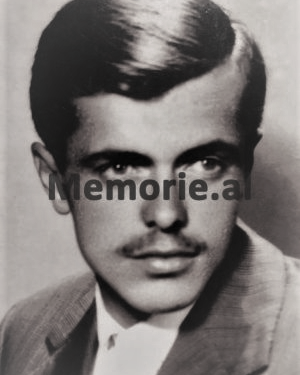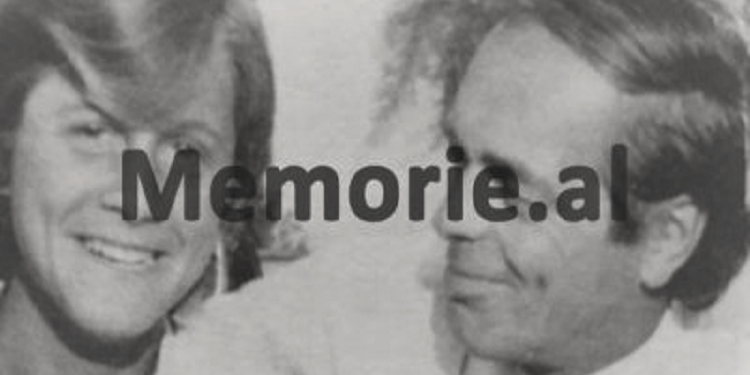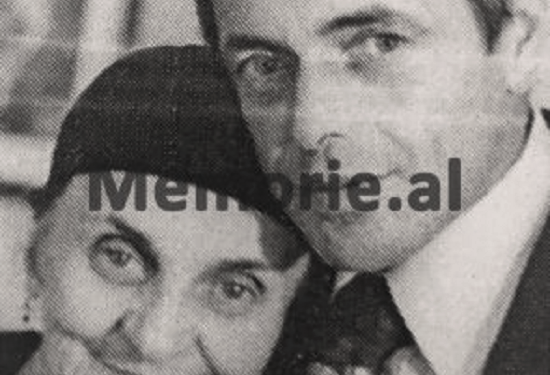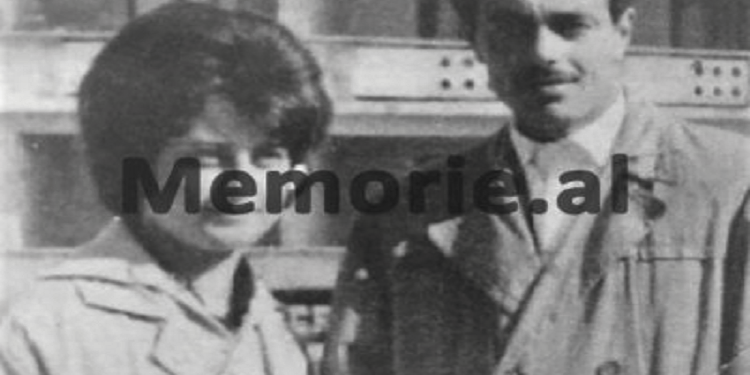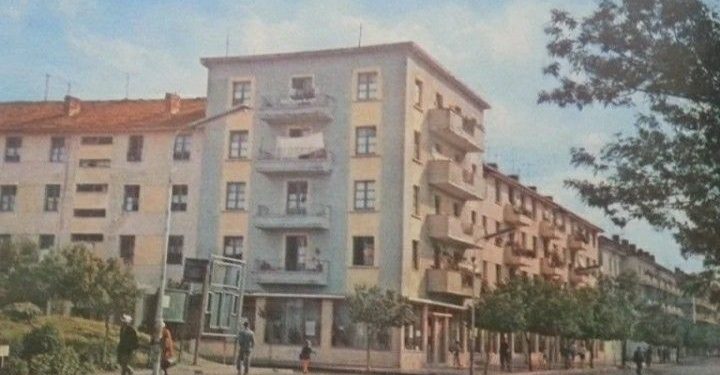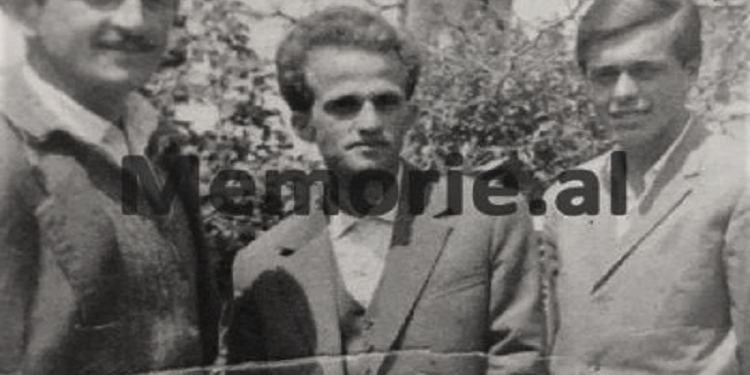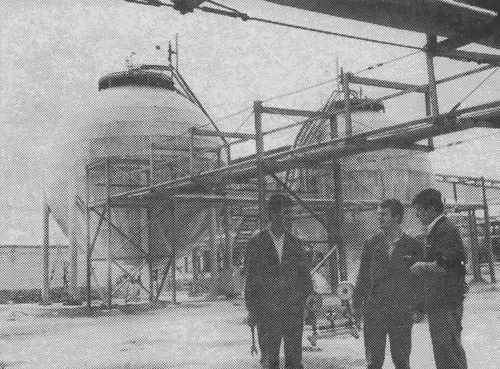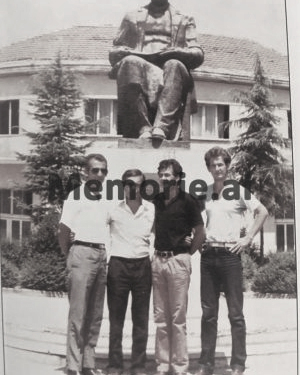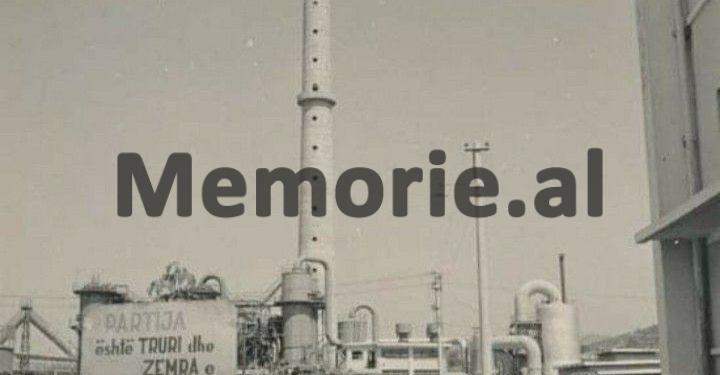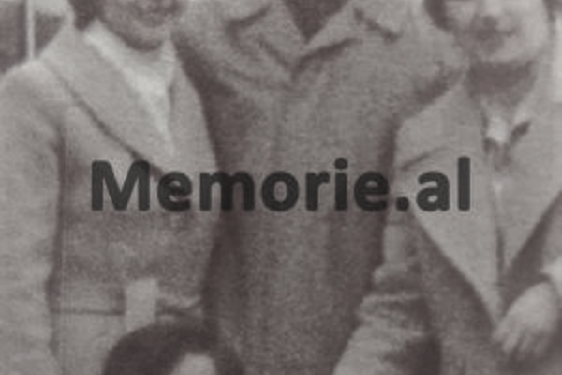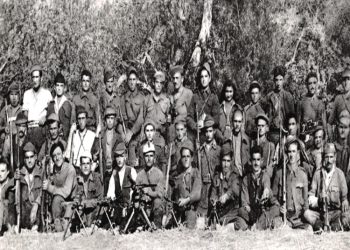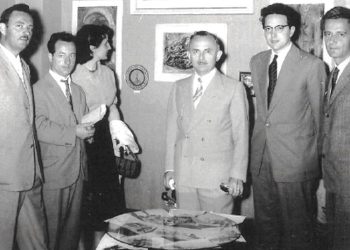Dashnor Kaloçi
Memorie.al publishes the unknown story of engineer Namik Luci, originally from Peja, who in 1984 was arrested by the State Security and after several months of investigation at the Department of Internal Affairs in Kruja, he was accused of, together with three fellow patriots of his, originally from Kosovo, (Shefqet, Selim and Estref Kelmendi), wanted to assassinate the “main leader of the Party”, during the visit he was going to make to the Museum of Skenderbeu in Kruja on the occasion of the inauguration of his. The unknown evidence comes to Memorie.al from the wife of the engineer, Namik Luci, Leni, a former teacher for many years in the city of Laçi and after the 90s the Mayor of the Kurbin Municipality, who recounts the conversations that Namik gave her, before that he was arrested for the treatment of Kosovars in the motherland and the Trepce mine in Mitrovica and how the visit, which he made to their home, in the city of Laçi, the world-famous actor, Bekim Fehmi, (the close cousin of Namik) to the legends that circulated after their trial, which initially sentenced them to death, where it was said that he had been “the most dangerous group after Mehmet Shehu”!
Mrs. Leni, in short, what was the past of your husband, Namik Luci?
Namiku was born in 1940 in the city of Peja, in Kosovo. But, not being able to endure the violence and oppression that was done to Kosovars by Tito’s regime, in 1961, he and two of his friends escaped and came to Albania. But their dream faded very quickly, as they were accused of being UDB agents and kept tied up in the cells of the investigation and later, interned in the camps of the villages of Myzeqe. After many vicissitudes, Namiku was allowed to pursue higher studies, in the branch of Chemical Engineering, the first year of which he had finished in Yugoslavia. After graduation, he was appointed as a chemical engineer at the Superphosphate Plant in Laç, where he worked diligently until he was arrested in 1984.
How do you remember Namik’s arrest?
Namik’s arrest took place in April 1984. As Namik told me, years later, when he was released from prison, that day, as usual, he had morning coffee with his friends at the Palace of Culture club in the city of Laçit, where we lived at the time, and left for the factory on foot. As he had made almost half of the way and had walked, to the outskirts of the city, somewhere near the sports field, a small car (“Gaz”) stopped at his feet and a voice from inside it addressed him saying : “Friend, why on foot, come with us in the car”. Namik threw away the cigarette that he never took out of his hand and got into the car, thinking that those who invited him would be his acquaintances. But, instead of the greetings he was expecting, the strangers told him that: “in the name of the people, he was arrested”.
When did you learn of his arrest?
At that time, I was continuing my work as a language and literature teacher in the city high school and as usual I was at work, while our four sons, where the oldest was 17 years old and the youngest 9 years old, were in school. Although Namik’s arrest had caused quite a stir throughout the town, the children and I knew nothing. When he was late and not coming home as usual, we began to worry and I took the eldest son, Petrit, out to ask some of his father’s friends. At first we remembered that Namiku had gone to Elbasan on business, as happened not infrequently, and he had not had the opportunity to inform us. With these thoughts and hopes at the same time, we spent that night and learned everything that had happened only the day after his arrest.
Who gave them the news about Namik’s arrest and they searched the house, as was the rule at the time?
The news of Namik’s arrest was brought to us by some of the kind people of our family, for, as I said, his arrest had made a stir in the whole town, where he had a great acquaintance, with many friends and comrades, who loved him and they respected him as a colleague and as an evening school teacher without breaking from work. They checked the apartment the day after Namik’s arrest, where more than ten people from the State Security turned the whole house upside down, looking closely at everything that was there. After two hours of searching, they left, finding nothing compromising.
Where did they isolate Namiku?
Namik had been isolated in the cells of the Special Investigation of Tirana and I learned about his isolation after a few days, when I was also called to question me. Regarding the arrest of Namik, at that time many words circulated and different versions were told. But among the most important ones, which are etched in my memory, were those where it was said that the group to which Namiku belonged was one of the most dangerous groups that had ever been discovered in Albania, after that of the police agent Mehmet Shehu, and that Namiku did not he had been a Kosovar, but a Serb and his real name was Namiković. Likewise, it was said that in 1981 it was not his mother who had come from Kosovo to visit him in the city of Laçi, but an agent of the UDB, dressed as an old woman. In the many words that spread at that time, it was said that Namiku had been a senior UDB agent and all his movements had been controlled by the State Security for years, which had monitored him step by step.
What were Namik’s relations with his family in Peja?
Until the end of the 70s, Namiku had only correspondence with his family in Kosovo and only in 1981, his mother came for a visit to our house. Likewise, I wanted to add that from 1974, the well-known actor Bekim Fehmiu, who was Namiku’s close cousin, came to visit us in our house in the city of Laçi.
Did Namik speak out against the regime in force at the time and did he feel that he would be arrested, or did it come to him all of a sudden?
Namik had a lot of dissatisfaction with the communist regime of that time and two of the main things, which he often talked about with me, were: the bad treatment of Kosovars in Albania and the bad economic and financial conditions faced by the workers in the country ours. He knew these two problems well, as he himself had been interned for several years in the field camps of Myzeqe and he also saw and knew the problems of the workers, wherever he worked in Laç or Elbasan. Namiku spoke openly with some of his friends about the backward technology that existed in our country and said that the government spent without criteria, where it was not necessary, meaning the bunkers and tunnels that were everywhere. But what tormented him the most was Kosovo, which Namiku had a wound in his heart and with his close friends; he said that she was betrayed by Enver Hoxha. Likewise, often in conversations with his friends, he expressed that when Kosovo was united with Albania, he would become the director of the Trepçe mining complex. But despite all this, the arrest came unexpectedly.
What happened to your family after Namik’s arrest?
After what happened, I was fired from my job as a teacher at the Laçi gymnasium and was taken as a simple worker at the Wood Factory. Due to the situations that happened to us, the two older boys, Iliri and Petriti, stopped school and went to work. Although Laçi was a city where the class struggle was not felt much, we could not escape the opinion that could be created about a family with a political convict. However, there were many people who came close to us and helped us, both in Laç and in Mamurras, where I worked after I was removed from education. Among them, I would like to single out Namik’s friend, Osman Deda, who was by our side in the most difficult days, without asking about the possible consequences.
What was Namiku accused of and how was he treated during the investigative process?
Namiku was accused of many things, but the main accusation against him was that in collaboration with three intellectuals: Estref, Shefqet and Selim Kelmendin (originally from Kosovo), he had attempted to assassinate Enver Hoxha, when he was going to visit the Museum of Skanderbeg, in Kruja. Namik was kept for more than 9 months, in the Special Investigation of Tirana, and during that time, all methods were used against him and other members of the group to force them to accept the accusations that were made against them. In addition to the physical torture, Namik was subjected to psychological pressure, making him listen to some recorded tapes with the wiretaps that were made in our house. The voices of our young children were clearly heard there, and the investigators told them: “You will never hear these voices again, in case you do not accept the charges that will be made against you.” Namik was told to accept the charges, as his friends had accepted them, and when he asked for a confrontation, they brought Estref Kelmendi, who had been reduced to bones and skin. When Namik saw Estrefi in that state, to save him from further suffering, he agreed to sign the charges against him. During the entire 9-month period, I was constantly called to the Investigator, asking me questions and putting pressure on me in various ways.
When did Namik’s trial take place and who were the other accused in that group?
The trial against Namik and the so-called group he was a part of took place in Tirana at the end of November and the beginning of December 1984. In addition to Namik, as far as I know, in that group were also Shefqet Kelmendi, Estref Kelmendi, Selim Kelmendi, Sejfulla Teta, Pirro Prifti and someone else, that I can’t remember, who were accused that in cooperation with each other, they wanted to assassinate Enver Hoxha, when he was going to visit the Skanderbeg Museum, in Krujë. There were other charges against them, but this was the main one. I was only allowed to attend one session, for 10 minutes, where nothing was said. Then they took us out, telling us that the trial would be held behind closed doors, as there were state secrets.
Did Namiku know those people before?
Namiku only knew Estrefi, Shefqet and Selim, who, like him, were Kosovar immigrants, while he saw the other two there for the first time. So, all the accusations against them were fabricated by the State Security and the General Investigation.
What punishment was given to Namik and the other members of that group?
The decision to sentence Namik and other members of that group was given by the Supreme Court on December 22, 1984, where four of the defendants were sentenced to death and the others to 25 years in prison. But then the People’s Assembly spared their lives and released them from 25 years in prison. Namiku was sentenced to 18 years and served part of the sentence in Qafë-Bari e Burrel, from where he was released at the beginning of 1991, when the mass protests for the overthrow of the communist regime of that time began. While Namik’s friend, Selim Kelmendi, died in Burrel prison under unknown circumstances.
Has Namiku told you the truth about the punishment?
After leaving the prison, Namiku explained to me in detail all the reasons why he and the others of that group were punished. Their punishment came as a result of the oscillating policy pursued by Enver Hoxha towards the Kosovars, and that process was mounted precisely to spoil the image of the Kosovars, presenting them as terrorists and agents of the UDB. With the punishment of that group and many other Kosovars, who were punished before and after, Enveri thought to justify all the barbaric treatment he had done to the Kosovars who had come to Albania over the years.
After the 90s, what did Namik do?
After the democratic processes, Namiku did not accept some of the offers that were made to him for company management and worked for some time as a specialist in the Industry office in the Municipality of Laç. Namiku passed away on March 7, 1998, exactly one day after he had participated in the big rally, which was held in support of the people of Kosovo. Apparently, he could not cope with the great emotions he experienced that day for his hometown, which caused the cerebral hemorrhage that took his life./Memorie.al




